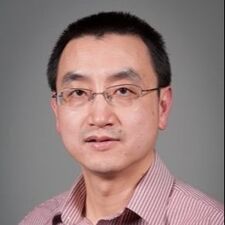
Dr. Zhao received his PhD degree in Scientific Computing from National University of Singapore in 2003. From 2003 to 2006, he was a postdoctoral fellow with the Michigan State University. Dr. Zhao has been on the faculty of Department of Mathematics, University of Alabama (UA) since 2006, and was promoted to the rank of full professor in 2015. He is currently the Leadership Board Fellow of the College of Arts and Sciences, UA. Dr. Zhao has published more than 70 papers, which have been cited more than 2200 times according to the Google Scholar. Since 2006, his research activities have received constant funding from the National Science of Foundation (NSF) with a total of seven grants. For more information about his group, one can refer to http://szhao.people.ua.edu/.
Representative Publications
- On regularization of charge singularities in solving the Poisson-Boltzmann equation with a smooth solute-solvent boundary, S. Wang, E. Alexov, and S. Zhao, Math Biosci Eng. 18(2):1370-1405, 2021.
- Regularization methods for the Poisson-Boltzmann equation: comparison and accuracy recovery, A. Lee, W. Geng, and S. Zhao, Journal of Computational Physics, 426:109958, 2021.
- Capturing the effects of explicit waters in implicit electrostatics modeling: Qualitative justification of Gaussian-based dielectric models in DelPhi, A. Chakravorty, S. Pandey, S. Pahari, S. Zhao, and E. Alexov, J Chem Inf Model. 60:2229-2246, 2020.
- A super-Gaussian Poisson-Boltzmann model for electrostatic solvation free energy calculation: smooth dielectric distribution for protein cavities and in both water and vacuum states, T. Hazra, S. Ahmed-Ullah, S. Wang, E. Alexov, and S. Zhao, J Math Biol. 79:631-672, 2019.
- Reproducing the ensemble average polar solvation energy of a protein from a single structure: Gaussian-based smooth dielectric function for macromolecular modeling, C. Arghya, Z. Jia, L. Li, S. Zhao, and E. Alexov, J Chem Theory Comput. 14, 1020-1032, 2018
Research Interests
Dr. Zhao’s research mainly focuses on interdisciplinary problems, where mathematical modeling and scientific computing can play a significant role. He has a track record in developing computational tools for molecular bioscience and biophysics. His recent research focuses on fast algorithms for solving PDEs, high-order interface and boundary treatments, implicit solvent modelling, electrostatic analysis, and fast biomolecular simulation.

